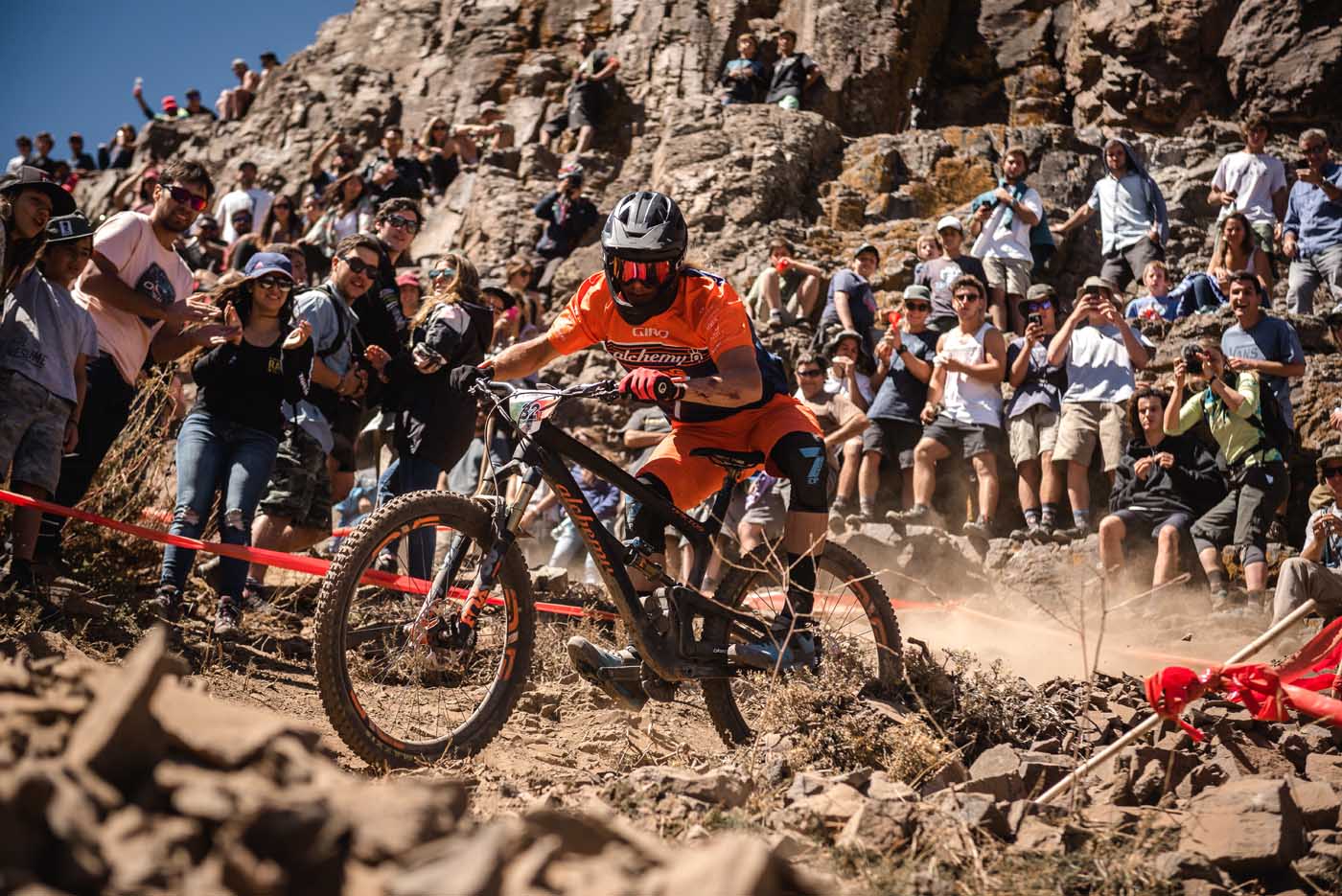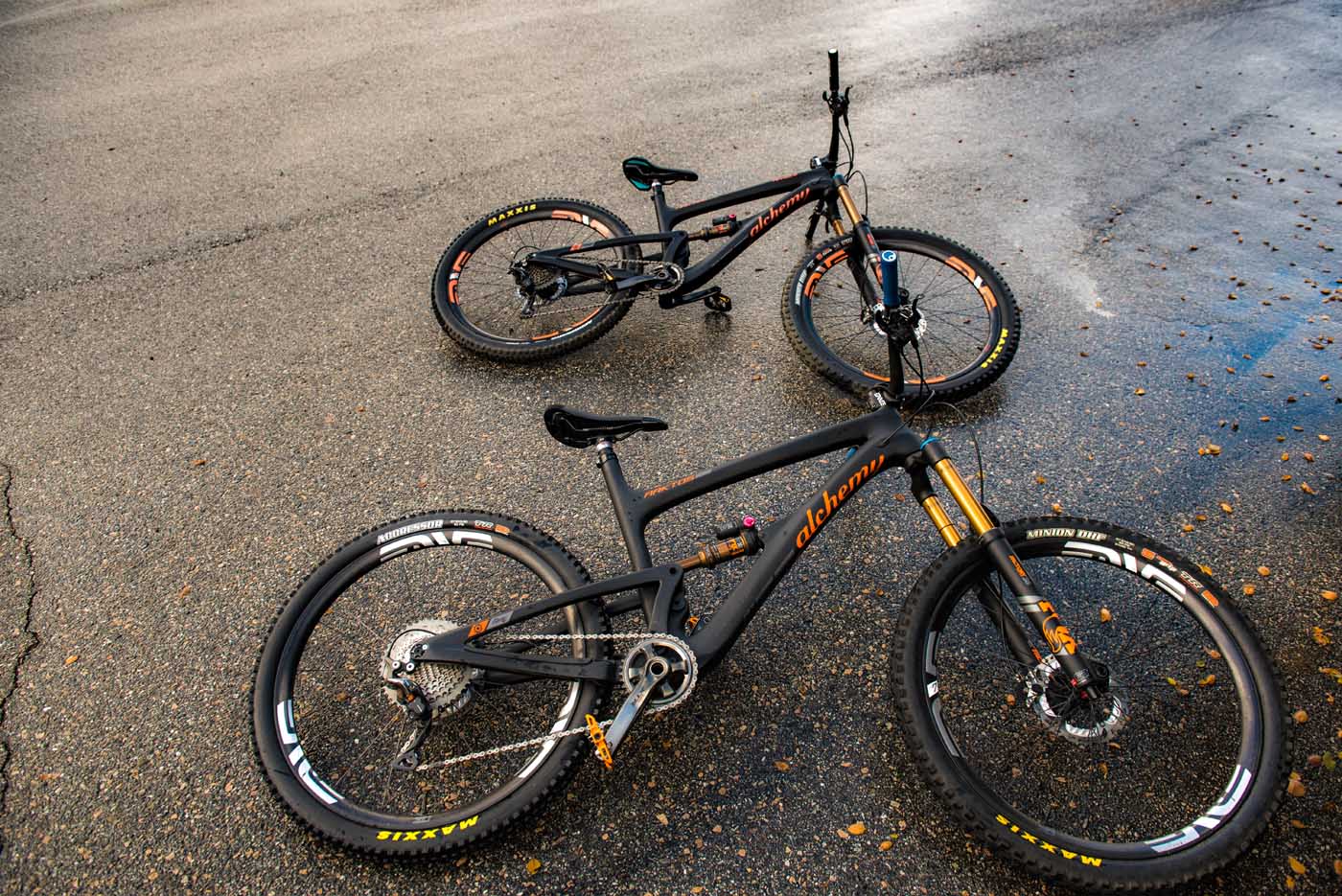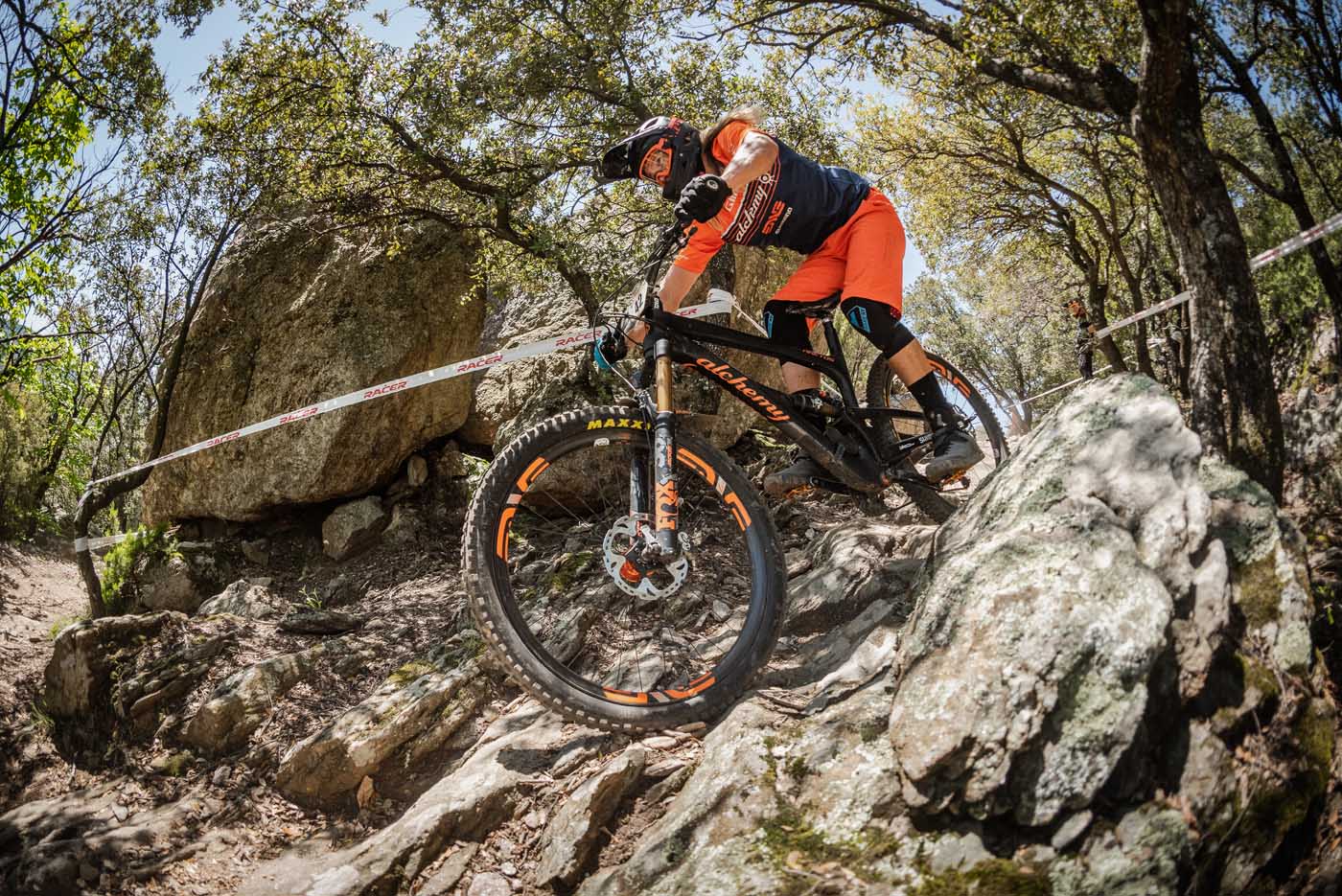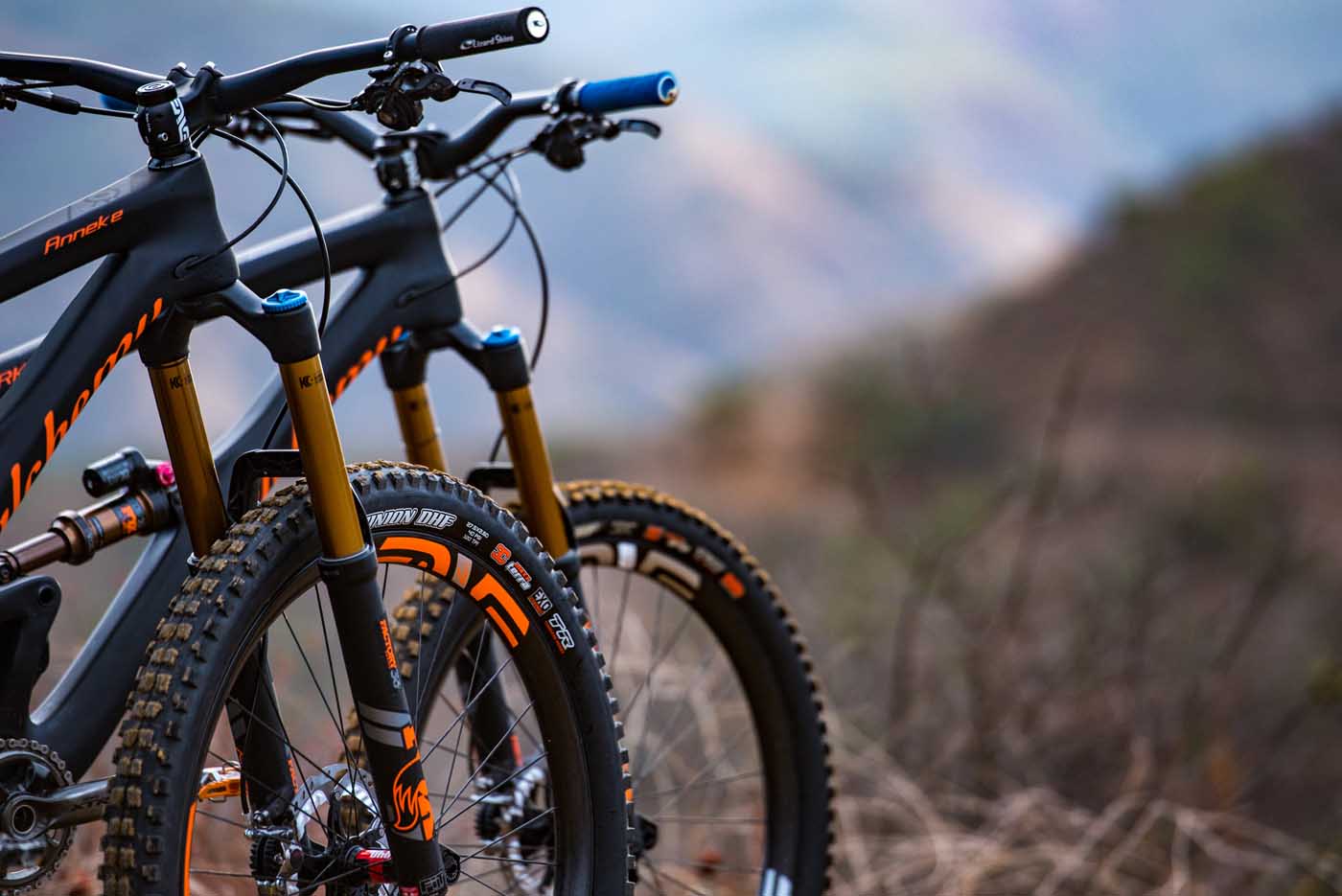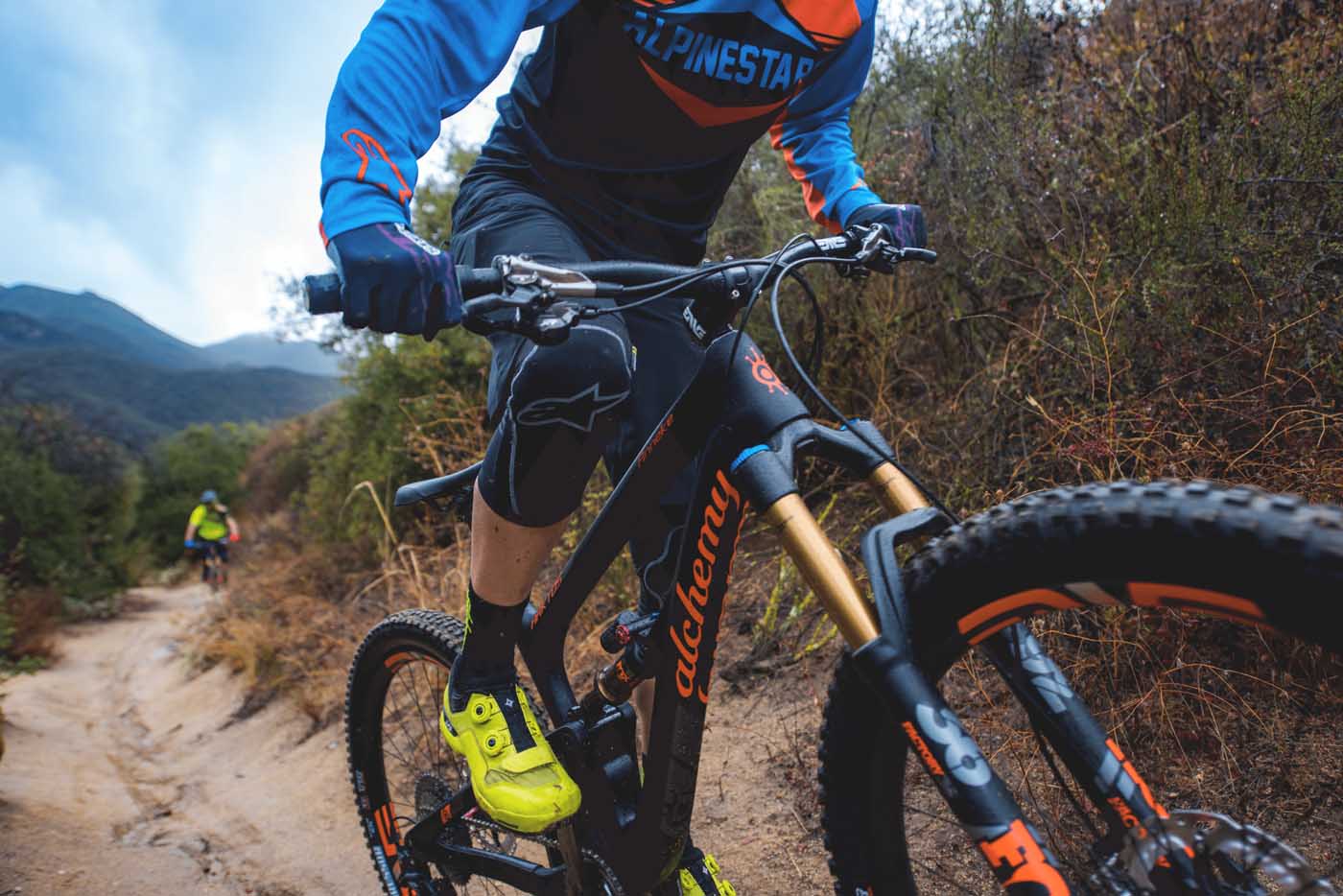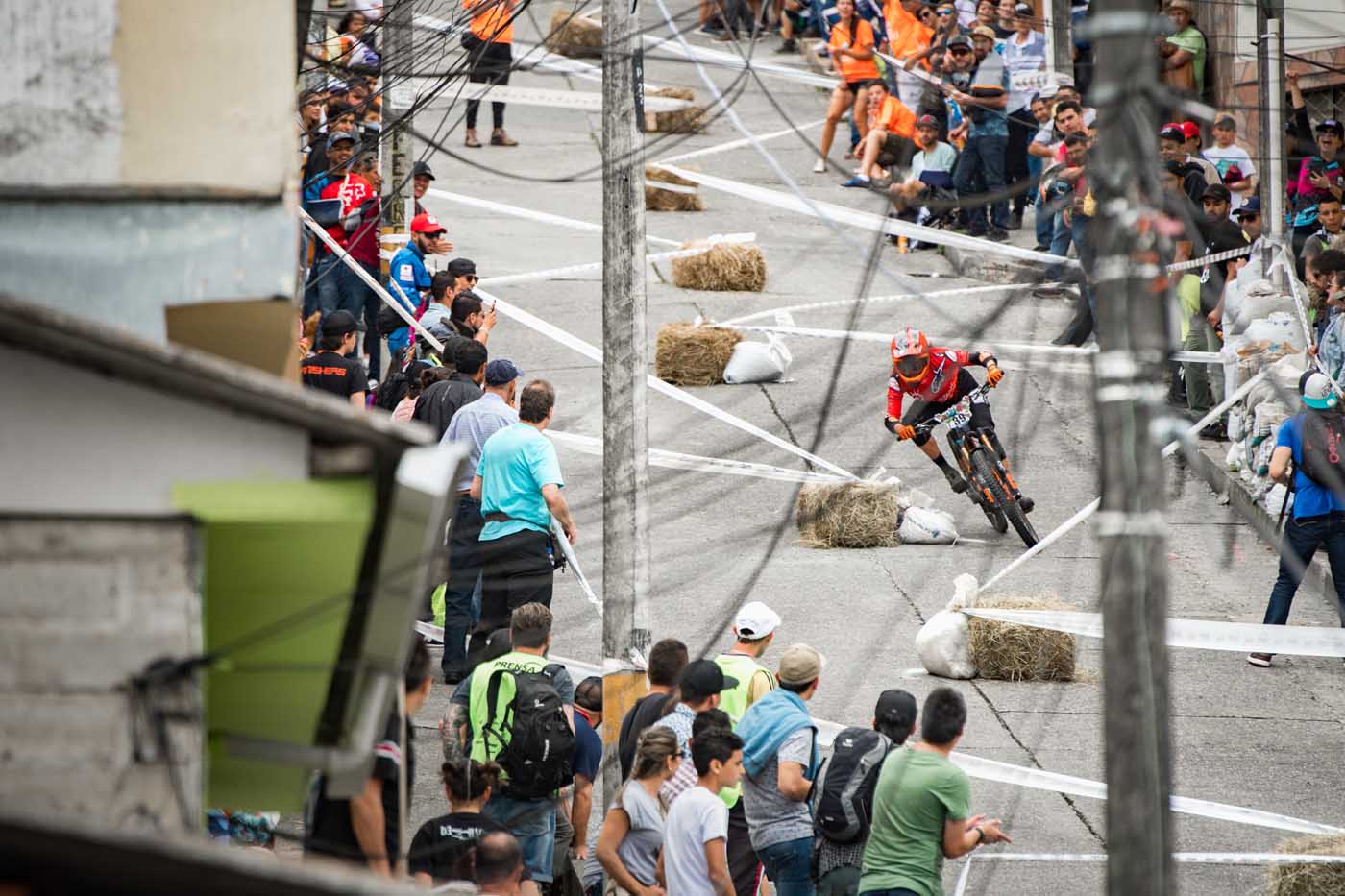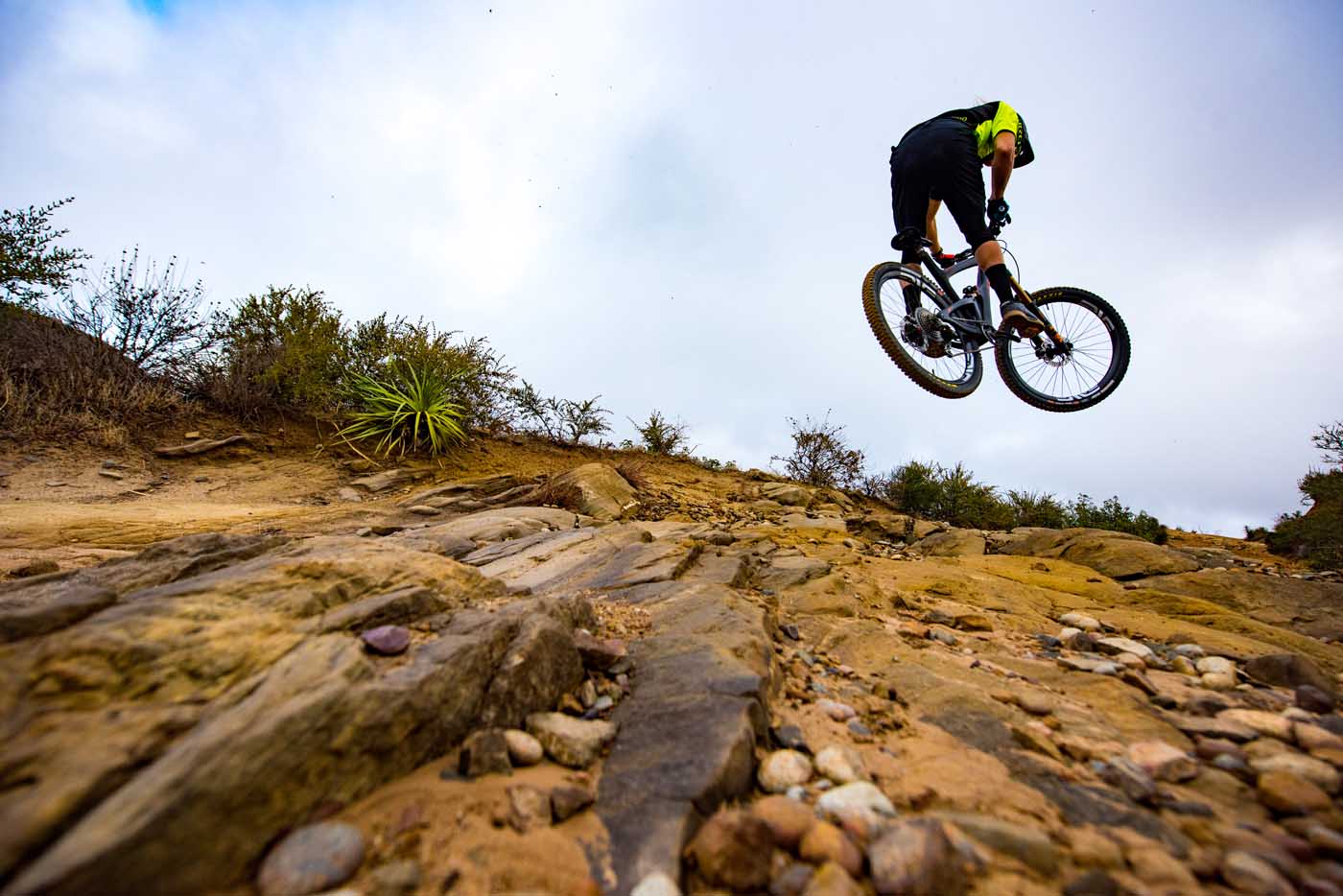This season our buddies over at the BikeCo bike shop in California, USA, have a stacked roster, supporting Enduro racing at all levels: From grassroot riders and customers all over the world, right up to the Ibis US Enduro Team captained by Brian Lopes, and the new Alchemy Factory Racing with Anneke Beerten and Cody Kelley who are doing battle on the EWS.
In this article we’ll be exploring in detail the differences in bike-set up and kit they carry between a rider racing a small club event on the weekend compared to that of a full blown professional racer contesting the next Enduro World Series event.
Words // Nate Collins
Enduro’s multi-stage events with minimal, if any, in-race mechanical support have shifted the emphasis points on bike build and setup. Unlike a ‘one and done’ race run format (say a standard DH race) teams are asking equipment to take a ton of abuse across a wider range of terrain over a longer period of time. Riders are faced with multiple, often quite long stages which one might “acclimatize” to through practice and footage review but are very hard to put every twist, turn and hole into the mental hard drive for race day. Adding how competitive the Enduro fields are with the increasing difficulty of the race courses and you can see where “to finish first, you must first finish” comes into play. We chatted with our teams about some of the key elements to dial in an Enduro bike at this level.
The all-important suspension!
More aggressive riding more aggressive setup. Seems fairly intuitive, right? It should. It seems like each EWS event is a competition between organizers over who can setup the steepest, most gnarly course – always outdoing the last. That has led to a setup more unique to world level race courses. Incredible course speeds lead to fast suspension setups. Like real fast. Suspensions that don’t quite feel right on sighting runs but come alive at race pace fast. Try wrapping your head around that as a non-professional athlete – “so, ah, it’s gonna be better when I go faster? Ok…”.
EWS courses are steep. Like hard to walk steep. This requires more front end support for a couple of reasons. One is that it keeps a rider’s body in a position less likely to fly over the bars. Another is saving the travel to pound through terrain. These riders need the front wheel to get through giant holes, rocks, etc on near vertical descents. Gnarly stuff.
So how do the world level riders increase fork support? More air, more volume spacers and a lot more compression. Ramp rate was brought up by both of the Alchemy riders.
“My biggest ‘must have’ when it comes to suspension is good ramping out of both the shock and fork. When I get the ramp the way I feel like it should be, the bike tracks the ground amazing and handles the big hits.” Cody Kelley
What’s somewhat surprising is generally EWS rider’s rear suspension isn’t too much stiffer than a standard setup. This is because most of the pounding comes through the fork. A supportive while compliant rear end allows confident direction changes with less “bucking”.
We asked Cody & Anneke about balancing a bike for an EWS weekend?
“This year the trails have become very technical and your suspension need to be on point. A few years ago you could still run your suspension on pro-pedal or fairly stiff every now and then, but these days you need all the travel you can get!” Anneke Beerten
Say you came across a similar weight EWS rider: what you’re likely to notice is a rear end with a spring rate you could ride but a fork that would feel just like a rock. And both would have rebound setup on the edge of skipping across terrain fast. Does this mean you should setup like this? Not till you have the speed, strength and terrain requirements!
When asked about setup changes between stages Cody replied:
“I don’t personally make any changes to the bike in between stages. Although it could be helpful in some situations, I feel it’s just over thinking it. I try to keep my head clear and ride the settings I found in practice.”
Working with the US Ibis Enduro team on a range of domestic courses we see a bit wider variance of setup based on race course layout. The game is still to setup with enough punch to get past terrain while balancing for rider strength and ground speed.
“I definitely have a “go-to” setup we spend the off season dialing in, but every course asks for little tweaks here and there. Usually, I’ll start the day with my normal setup and change a couple things first day of practice if there are two, and first half of the day if there’s only one day of practice. After that, I’ll just focus on the trail/lines.” Paul Serra
As a ground rule the “lighter” the discipline or terrain the “lighter” an ideal setup will be. Another point on suspension – it requires maintenance! Every time you see your fork’s stanchions coated in dirt a portion of that has gulped past the seals and into the lube oil. If you’re running full tilt on your systems the oil sees a tremendous heat load which definitely affects it’s performing consistency.
EWS suspension will have oil changed and dampers reviewed each round of racing. Dampers typically require less service but must be inspected. For instance a swollen fork bladder needs to be addressed or performance (and longevity) suffers drastically.
Domestic level riders who aren’t pushing quite as hard should be doing this every month or two for performance. In fact, most serious grassroot racers should be doing this every two to three months. Oil past its prime creates slappy, inconsistent suspension. No good for going fast.
Fresh oil but feeling slappy? Check and see if you can burp your fork lowers. It doesn’t take much air “gulp” past the seals to create a nasty negative spring pushing back against your supple small bump compliance.
Tyres are a big part of the equation
Where the rubber meets the trail is literally important more than figuratively poetic. Tread pattern, size, volume, sidewall technology and rim protection are critical to traction, speed as well as confidence.
As established, EWS courses are crazy. Steep, ludicrous terrain. Like near UCI downhill levels of nuts. Oh, and with one course walk and one practice run per stage. That means even the most talented riders aren’t memorizing every nook and cranny. Which means they occasionally smash things.
So when you need to be able to smash things and keep the wheels up sidewall technology is critical. EWS riders tend to run Double Down sidewall. If a tread pattern or size isn’t available in Double Down a folding Kevlar bead DH tyre is used. If a course requires a very fast tread pattern offered in say an EXO casing a more robust rim protection Cushcore or equivalent will be used to protect the rim as well as increasing sidewall rigidity. Too soft of a sidewall will squirm under hard cornering and is more likely to burp or tear.
“For EWS’s I run Maxxis Double Down Casing front and back. I find that it helps with my traction to have the sidewall support and I can get away with a little lower pressures as well. I have a lot of faith in the Maxxis and Enve combos. They are both solid products and I can let it go a little more into rough sections of track as well as corners.” Cody Kelley
The Ibis US Enduro team runs a variety of events across a wide range of terrain. Understanding the balance between terrain, tread and sidewall for a particular riding style often comes down to experience.
“I pretty much always ride a WTB Vigilante on the front and the rear I change up depending on rolling speed. But I always race the WTB tough casing tyres and have had really good luck with them. I run on the higher side of air pressure to today’s standards 26-30 front and 28-35 rear.” Evan Geankoplis
Reading into the Ibis’ team quotes you see some interesting facts. Evan notes while he runs a consistent front tyre he varies the tyre pressure by around 15% depending on conditions. While some of this change maybe due to different altitudes the rest is to balance efficiency, traction, confidence which when added together equal speed.
Paul isn’t a large rider, weighing in around 64kg’s, but is competitive while racing the tough casing WTB tyres with a foam rim protector. Like Lili mentioned a good portion of this comes down to confidence allowing for faster line choice while carrying more speed from having appropriate setups for the conditions.
In a world that was (sometimes is) hyper focused on grams we are finding that fast riders are willing to go a bit heavier for confidence, traction and handling. The additional unsprung weight in fact will slow down a bike’s steering slightly giving it a less “nervous” feel as it absorbs hits trying to pull the bike off line.
Repair Kit – what to carry to save your day
We asked our racers about what they took with them on course for a confident race day?
“I couldn’t imagine doing an EWS without my Oneup EDC Tool! I feel like I have quite a few bases covered with that and I don’t have to worry about carrying it in my pockets and such because it’s stored in the steerer.” Cody Kelley
“Must-haves? Dynaplug kit with plugs & CO2, tools including a tyre lever, chain breaker, spoke wrench, multi-tool, chain quick link, tube, spare CO2 with inflator, derailleur cable, and a derailleur hanger. In terms of food I’ll carry some Skratch Labs hydration mix in their little individual packs to mix it with the water at the food stations, some Skratch bars, rice cakes that I made, and some candy cause everyone likes candy!” Paul Serra
You won’t see pumps on bikes at the highest levels and less and less even on grassroot races. Most riders carry tubes while nearly all carry plug kits with CO2 inflators.
On a similar decline are hydration packs. Stash style undershirts and bibs as well as hip packs have taken over to carry odds and ends.
‘Setting Up’ vs ‘Tuning Up’
Obviously, there are differences between a professional rider and grassroot racers in terms of spares, team support, etc. That said, some basic setup will go a long way towards a smooth-running race weekend.
“Racing the EWS is so challenging and there are so many factors that play a role on race day, but the most important thing for me is feeling good on my bike and the setup.” Anneke Beerten
Showing up with a bike that’s not riding 100% is almost always a fiasco. On a world level professional mechanics race prep bikes prior to an event. Riders jump on to dial in the details, not to diagnose faults. While the rest of us don’t have personal mechanics, coordinating the time to have your bike race prepped or dialing it in yourself is critical.
When you show up on a race weekend tyre choice, suspension setup and gearing are valid concerns. Your practice day isn’t when you want to start trying to find a creak that’s going to take you down a rabbit hole of loose pivots, frozen bearings, or whatever else you might find.
“I definitely have a “go-to” setup we spend the off season dialing in, but every course asks for little tweaks here and there. Usually, I’ll start the day with my normal setup and change a couple of things first day of practice if there are two, and first half of the day if there’s only one day of practice. After that, I’ll just focus on the trail/lines.” Paul Serra
And finally, define Role Management!
No matter what level you race being mentally prepared and focused is going to help. Staying in a clear, focused mindset is much easier when you’re not constantly putting out fires or running around like a chicken with your head cut off. I’ve seen it for years traveling with BikeCo owner Joe Binatena and pro rider Brian Lopes. Those two are on autopilot for every detail. No hussle, no hassle.
Then there are times I go out with other riders and its just constant chaos. Not the same vibe going up for practice or a race run after an hour of enjoying the view compared to an hour of searching for goggles or wondering if you can get a hub back together in time to start.
As a privateer racer you’ve simply got too much on your plate to hit everything all the time. Being racer, mechanic and team manager is a hell of a task. Pre-riding, reviewing courses, eating, resting and racing are a lot. The more help you can get with the other details the more stoked you will be.
Being proactive with your food menu and meal times can be very helpful. Sharing driving / shuttle duties eases the strain allowing racers to stay focused. At the highest levels racer’s race. Mechanic’s wrench. Team management and support work to keep everything running as smoothly as possible.
We asked if there was an “eye-opening” moment when racing at the higher levels?
“Oh yes! Especially this year. Honestly, for me, the most important part is that I’m confident I did everything I could to perform well. It’s essential that everything I am in control of has been done well like sleeping, practice (watching my GoPro footage, focusing when I need to, and bike setup), eating right, recovering right (with stretching and rolling). Never leave anything to chance! Once I know that’s dialed in, well, racing is racing and anything can happen! But I know I’m ready.” Paul Serra
Finally, we’d like to extend a very special thanks to Anneke Beerten, Brian Lopes, Cody Kelley, Evan Geankoplis, Lili Heim & Paul Serra for their insight.





